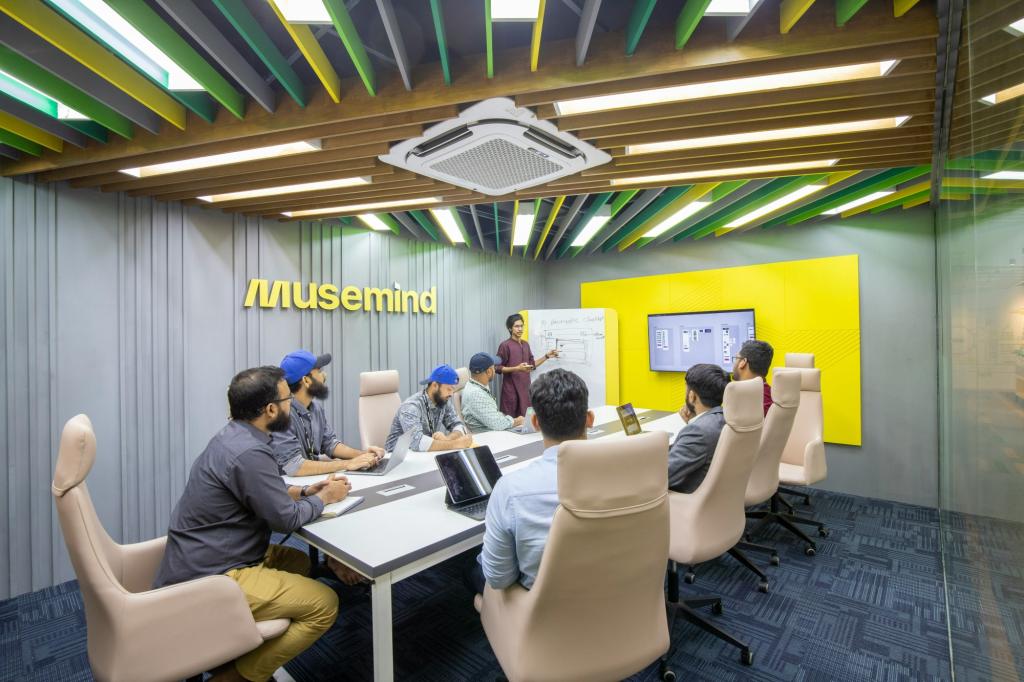
The surge of Generative AI (Gen AI) across industries is more than a technical revolution—it’s a people-centric transformation. While traditional machine learning (ML) tools helped businesses predict trends and optimize workflows, Gen AI amplifies these advances by generating creative strategies, customer insights, and fresh approaches to product development. Now, Gen AI “agents” take this evolution a step further by autonomously planning and executing parts of a complex workflow. By connecting seamlessly to data, orchestrating tasks across software systems, and interacting in human-like ways, these agents help reshape the very structure of how work gets done.
The Shift from Reactive ML to Agentic Gen AI
Traditional ML primarily offered data-centric predictions—a model would forecast next quarter’s sales or flag suspicious financial transactions. While that helped reduce costs and improve accuracy, these models generally relied on humans to interpret results and manually act on recommendations. By contrast, Gen AI’s ability to generate new content—such as text, images, and even code—enabled a leap from reactive analytics to creative solutions. Now, Gen AI agents go further, moving beyond content creation into autonomous decision-making. Once trained, an agent can evaluate an organization’s data in real-time, plan a series of tasks to accomplish a goal—like responding to a customer support issue or scheduling deliveries—and carry out those actions automatically.
This shift from “predictive analytics” to “autonomous collaboration” underpins Gen AI’s role in industries from finance and marketing to healthcare and manufacturing. In banking, for instance, an AI agent might not only flag a suspicious transaction but also investigate it by gathering client records, combing through external data, and proposing next steps. In effect, it blends the analytical power of older ML systems with the resourcefulness of a skilled employee, letting human experts focus on final decisions and higher-level strategy.
Why Industry is Embracing Gen AI Agents
One core advantage of these agents lies in efficiency. In many organizations—logistics, retail, professional services—employees spend countless hours on repetitive tasks that, while important, sap time and energy. Gen AI tools excel at rapidly generating first drafts of marketing copy, summarizing legal documents, or handling back-and-forth email threads. Once these tasks fall to AI agents, employees reclaim the time for strategic, creative, or interpersonal work that AI cannot fully replace. In turn, that shift boosts morale and helps each individual become more effective, eroding the “automation anxiety” that often accompanies AI adoption.
In addition, Gen AI agents aren’t narrowly specialized. They’re general-purpose engines that handle planning, problem-solving, and communication in multiple domains. A logistics manager can use one agent to coordinate supply chain orders, while a marketing associate uses another to refine A/B testing copy. As the technology matures, organizations can unify these agents to act seamlessly across functional boundaries. Some companies already see how a Gen AI agent in customer service can hand complex business intelligence tasks off to a financial agent, bridging department silos with minimal human intervention. This synergy leads to innovative solutions that fully leverage an organization’s internal data.
Shifting Mindsets: Agents as Allies, Not Adversaries
Even the most powerful Gen AI won’t fulfill its promise if employees mistrust it. Workers often fear automation and suspect AI could replace them. Leaders can reduce these anxieties by explicitly framing Gen AI agents as teammates rather than threats. Emphasize that AI agents free employees from repetitive tasks and enhance human creativity instead of competing with it. Offer a clear policy: no layoffs directly tied to adopting Gen AI, or an upskilling program where those who master AI agent interfaces become more valuable, not obsolete.
Engaging employees early in pilot projects helps, too. When a Gen AI agent is introduced, invite small teams to explore it for daily tasks, documenting what works well and where the AI stumbles. By sharing honest stories of success—and occasional misfires—leaders build trust and transparency. Over time, employees who once feared job displacement come to see AI as a tool that handles drudgery, letting them do the strategic parts of their role. In this sense, it’s a people-first transformation, supported by technology, not the other way around.
Industrial Use Cases for Gen AI Agents
- Manufacturing and Supply Chain: Imagine an AI agent that monitors factory outputs, supplier inventories, and transportation updates in real time. When an unexpected delay hits in one region, the agent autonomously flags alternative suppliers. Rather than waiting for human intervention, it places a provisional order to avert downtime, then prompts a manager for final sign-off. By automating basic tasks and decisions, the agent keeps production lines running smoothly.
- Healthcare and Biotech: Healthcare organizations already leverage Gen AI for record summarizing and diagnosing. Agents go further, acting as digital aides to triage incoming patient data, identify potential side effects in new drug trials, or schedule follow-up tests when it sees anomalies. A human clinician still validates results—especially for high-stakes decisions—but the agent cuts administrative overhead, letting providers focus more on direct patient care.
- Retail and E-Commerce: A Gen AI agent can coordinate targeted marketing campaigns, forecast demand, and handle customer inquiries around the clock. If a customer requests a price match, the AI agent checks competitor rates, evaluates the margin impact, and either approves or routes the case to a manager if it’s beyond set thresholds. Such integrated planning reduces friction for both customers and staff.
- Financial Services: Banks and insurance firms use Gen AI models for fraud detection. An agent might also interact with customers to gather context around a suspicious charge. When it confirms or negates an incident, it updates the relevant dashboards, handles forms, and triggers the necessary compliance steps automatically. This human-in-the-loop but AI-driven approach cuts manual drudgery and speeds resolution times.
Balancing Autonomy and Oversight
The more autonomy we grant AI agents, the bigger the payoff in streamlined work—but the higher the stakes, especially around errors or ethical concerns. A customer service chatbot that occasionally makes a factual slip can be corrected without major damage. But if an agent independently commits funds or sets high-level strategy, a single AI misstep can cause reputational or financial crises. An effective check includes threshold-based approvals—where routine decisions fall under the AI agent’s purview, but more sensitive choices require sign-off by a human specialist. That approach minimizes risk, yet preserves the agent’s ability to handle tasks that don’t need deep human judgment.
Leaders must also implement safety and risk strategies. Dedicated AI ethics roles, such as an AI ethicist and risk manager, can help. They create guardrails to prevent the agent from violating data privacy or generating biased decisions. A thoughtful governance model ensures accountability. In short, you want employees to trust that the AI won’t go rogue, while also trusting that if it does make a mistake, there’s a plan for catching and fixing the error quickly.
The best technology adoption strategies focus heavily on upskilling employees. Continuous learning—showing staff how to prompt Gen AI effectively and interpret outputs—helps sustain the benefits of AI-driven processes. Organizations can design “role-based academies” that teach relevant usage for each function. Finance analysts learn prompt engineering for forecasting, while marketers practice building generative campaigns. As Gen AI agents expand their capacity, employees can explore advanced features and help shape further improvements. This mindset of collaborative experimentation not only extends the AI’s value, but also diffuses any lingering fears around displacement.
Even as businesses adopt current AI tools, the technology itself progresses. Agentic Gen AI will soon coordinate with other advanced systems—robotics, Internet-of-Things sensors, AR/VR—to form tightly integrated workflows that function with minimal human involvement. In these future scenarios, leaders must ensure that user oversight, data quality, and robust governance remain front and center. The real promise of Gen AI is a world in which humans and autonomous agents collaborate to tackle challenges more efficiently, not a future dominated by ungoverned machine decision-making. By laying the cultural and technical foundations now—transparent communication, risk management, and strategic training—organizations position themselves to capture the next wave of AI innovation.
Conclusion: Human-First, AI-Powered
Gen AI already shows remarkable value in automating tasks, generating insights, and boosting operational speed. Yet the greatest transformations arise when organizations treat these technologies as an enabler of human ingenuity rather than a faceless replacement for people. From healthcare and finance to supply chain and marketing, industry leaders who align AI initiatives with empathetic leadership, robust governance, and continuous learning see the most enduring payoffs. By embedding AI agents into daily workflows responsibly—granting them well-defined autonomy while giving employees a sense of security—companies can unlock the full power of Gen AI. When technology and humanity collaborate, industry moves from mere productivity gains to meaningful, creative leaps that redefine what’s possible.
Key Take-Away
Gen AI agents are reshaping work by autonomously planning, executing, and communicating across systems—freeing humans from repetitive tasks and enabling smarter, faster, and more creative collaboration across every industry… >Click to tweet
Image credit: Musemind UX Agency/Unsplash
Originally published in Disaster Avoidance Experts
Dr. Gleb Tsipursky was named “Office Whisperer” by The New York Times for helping leaders overcome frustrations with hybrid work and Generative AI. He serves as the CEO of the future-of-work consultancy Disaster Avoidance Experts. Dr. Gleb wrote seven best-selling books, and his two most recent ones are Returning to the Office and Leading Hybrid and Remote Teams and ChatGPT for Thought Leaders and Content Creators: Unlocking the Potential of Generative AI for Innovative and Effective Content Creation. His cutting-edge thought leadership was featured in over 650 articles and 550 interviews in Harvard Business Review, Inc. Magazine, USA Today, CBS News, Fox News, Time, Business Insider, Fortune, The New York Times, and elsewhere. His writing was translated into Chinese, Spanish, Russian, Polish, Korean, French, Vietnamese, German, and other languages. His expertise comes from over 20 years of consulting, coaching, and speaking and training for Fortune 500 companies from Aflac to Xerox. It also comes from over 15 years in academia as a behavioral scientist, with 8 years as a lecturer at UNC-Chapel Hill and 7 years as a professor at Ohio State. A proud Ukrainian American, Dr. Gleb lives in Columbus, Ohio.












